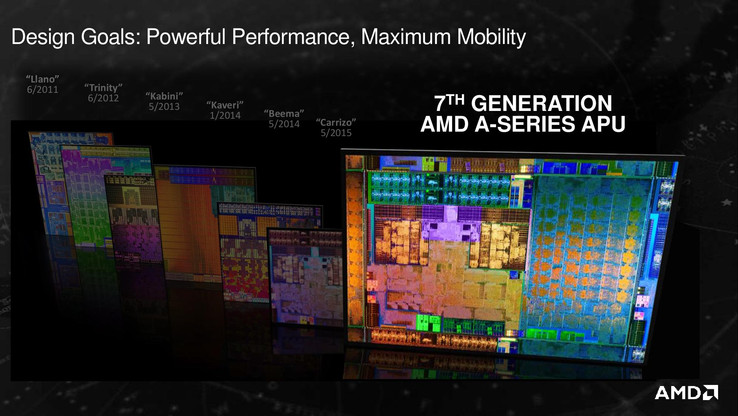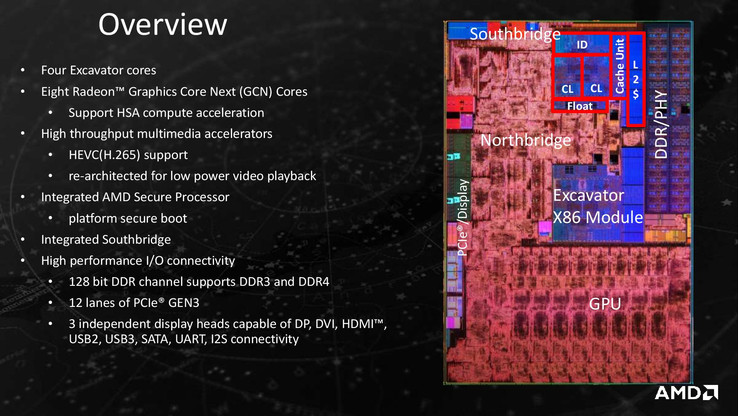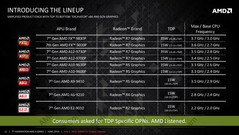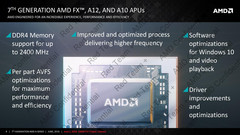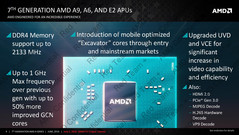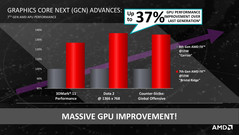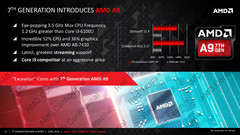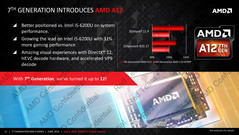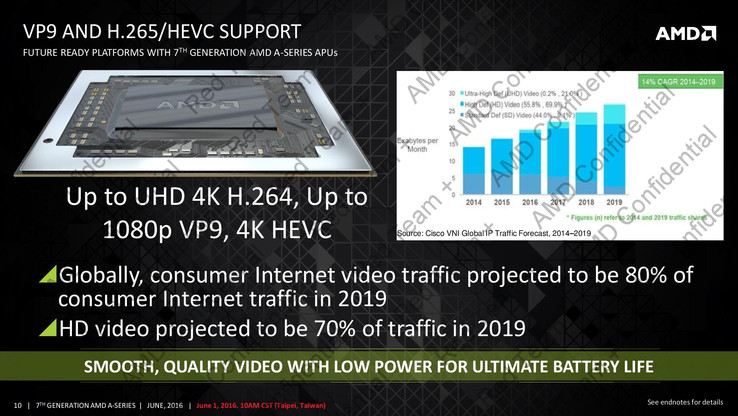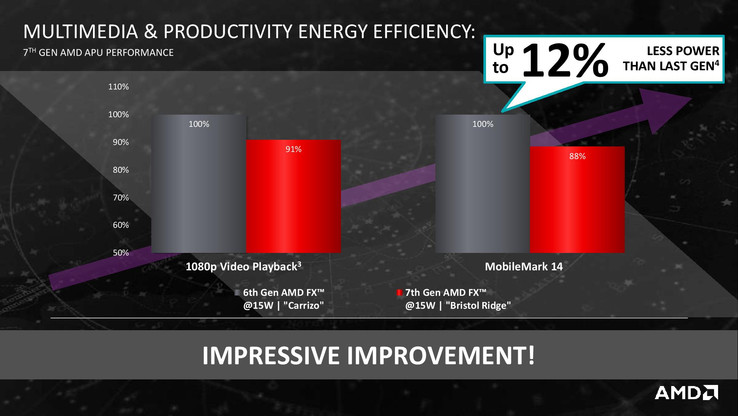Computex 2016 | AMD: Bristol Ridge APUs announced
AMD announced the 7th generation of the A-series APUs at Computex 2016. Similar to the predecessor "Carrizo", AMD once again uses Excavator cores, which are manufactured in a 28 nm process. Contrary to earlier reports, we still have to wait on 14 nm cores with the code name "Zen".
While the progress is therefore pretty small in terms of CPU performance, AMD has supposedly improved the graphics performance, multimedia features and the efficiency in particular. The consumer chips now also support modern DDR4 memory (up to 2400 MHz).
CPU Performance
Thanks to optimizations for the manufacturing process, the new models can reach higher clocks. AMD speaks about a maximum performance increase of 56 percent compared to the old Kaveri architecture, which translates into an advantage of up to 16 percent over Carrizo. The new models are also interesting. While the Carrizo APUs could be operated at a TDP between 12-35 Watts, there are now several models with a specified TDP of 15 Watts (cTDP 12-15 Watts) and therefore directly compete with Intel's ULV chips. The 35-Watt chips on the other hand can be configured with a TDP between 25-45 Watts.
AMD divides the available APUs into two performance classes. The models FX, A12 and A10 have a bigger focus on the performance and support faster DDR4-RAM with up to 2400 MHz, while the models A9, A6 and E2 are designed for entry-level as well as mainstream machines and support up to DDR4-2133. The A9 APU is designed to be a direct rival for Intel's Core i3-series.
GPU Performance
The new Bristol Ridge APUs are once again equipped with different GPUs, staring with the Radeon R7 Graphics, the R5 Graphics and then R4 as well as R2 Graphics for the entry-level chips A6 and E2. AMD talks about a performance increase of up to 37 percent. This comparison was done with the new FX 9800P (15 Watts) and the old FX 8800P (at 15 Watts). AMD does not give us any detailed specs yet, but the clocks of the GPUs should be higher, similar to the CPUs.
The A12 APU (A12-9700P, 15 Watts) has an advantage (GPU performance) of 31 % compared to the main rival Intel Core i5-6200U according to AMD.
Video Features and Efficiency
There are only small differences compared to the predecessor "Carrizo" in respect of the video features. Besides the support for 4K material (H.264 and HEVC), VP9 in Full-HD is now supported as well. The efficiency was also slightly improved. AMD talks about 9 percent less power during the playback of a 1080p video and up to 12 percent less in MobileMark 14.
First Assessment
Even though we still have to wait for the 14 nm chips, AMD's new Bristol Ridge generation seems to perform better than before, particularly in the important TDP range of up to 15 Watts. The current Carrizo chips could not convince compared to their Intel counterparts in this performance class so far, so we will have to wait for test devices with the new AMD APUs before we can give you our final verdict.
Source(s)
Own


 Deutsch
Deutsch English
English Español
Español Français
Français Italiano
Italiano Nederlands
Nederlands Polski
Polski Português
Português Русский
Русский Türkçe
Türkçe Svenska
Svenska Chinese
Chinese Magyar
Magyar